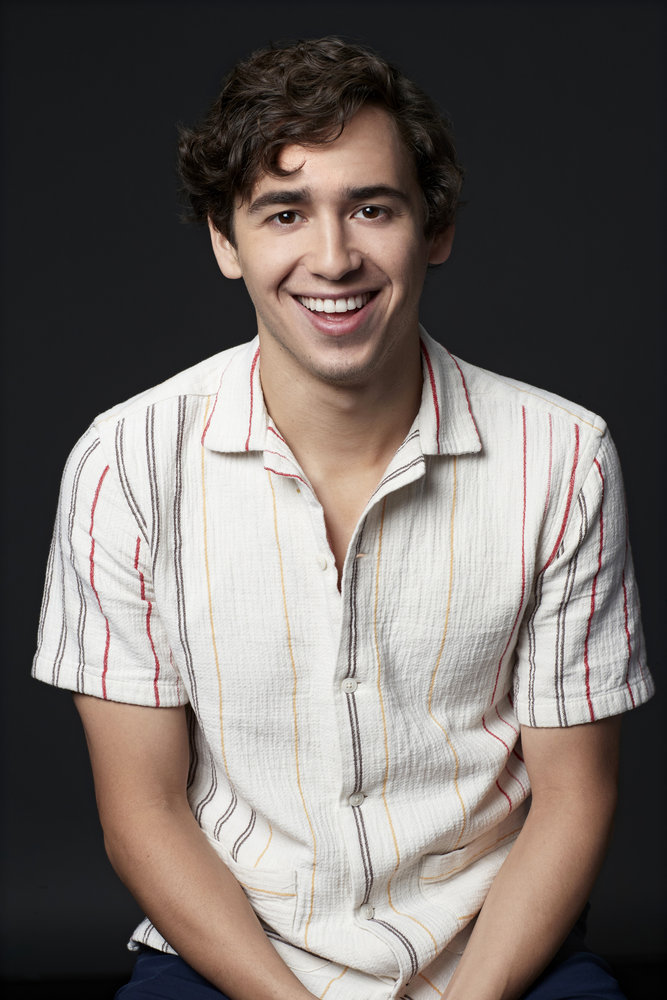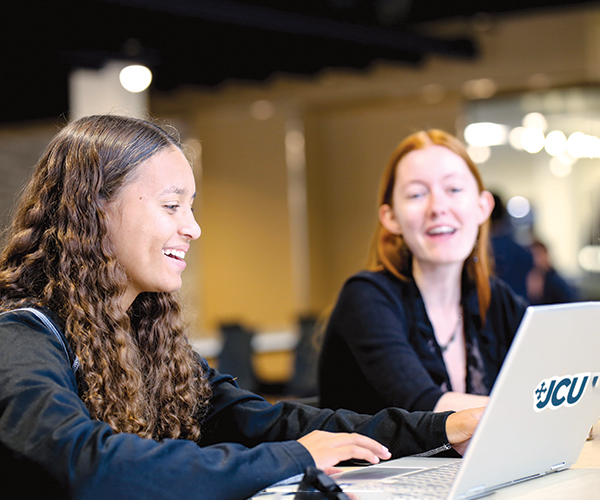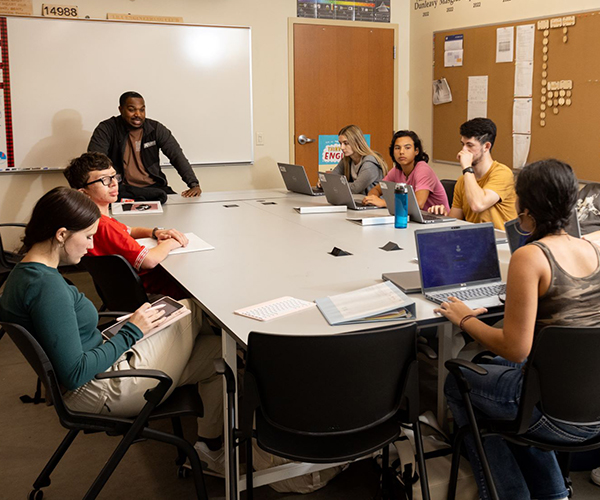Four Ways To Help Private School Students Down The Road
by Angela Chambers | Sep. 19, 2017 | 7:00 PM

At the North Ridgeville independent school, Hammond asks the 5- and 6-year-olds how they want the room to feel and operate, what rules are important to them and when these aren’t followed what the consequences should be. Typically, rules aren’t fully formed until the second or third week of school.
“I don’t know these children coming in,” says Hammond. “It’s important as a teacher that I get to know how they learn and where their interests lie. I see this as such an amazing way of connecting to children authentically in their learning.”
It also helps the Lake Ridge teacher establish critical thinking, communication, collaboration and creativity skills — or the “Four C’s” — that will be a foundation for their educational future.
Hammond asks her young students to think critically about their learning styles and how to communicate this to the teacher, which are questions children often haven’t heard at this age. The kindergartners collaborate on best practices for the entire group. This process takes creative thinking outside the typical top-down, teacher-to-student learning.
The National Education Association began developing the “Four C’s” within the last decade as a framework for educators’ curriculum. Yet many Northeast Ohio private schools have been emphasizing these skills much longer than the current millennium.
At Hawken School’s lower school in Lyndhurst, for example, third-graders begin the year studying Native Americans, early European settlers and slavery. In the classroom, students delve into documents, such as historic maps, photographs and artwork, and ask questions about how westward expansion affected Native Americans and what happened to slaves.
The schoolwork is paired with a trip to the Cleveland Museum of Natural History, where they participate in the American Indians gallery program, which teaches students the environment and culture of North America before European settlers arrived. During a hands-on Ohio Indians Plus workshop, students identify and analyze artifacts from groups in Ohio over time.
At Hawken’s extension campus, the Gries Center in University Circle, the third-graders learn about Native Americans’ diverse cultures and lifestyles. Once the field trips and research are complete, each student designs a project, such as a skit portraying Inuit’s daily life or a poem about the Trail of Tears, which are each based on individual interests.
“If children at a young age are given choices and feel empowered to learn in a way that feels comfortable, it opens so much opportunity for them as adults,” says Hawken third-grade teacher Julie O’Neill.
While her students enjoy their projects, the process is the most important takeaway, she says. “It’s exciting to see students discover information, make connections, find ways to organize the information and even begin to analyze conflicting information,” O’Neill adds.
The love of learning Lake Ridge has nurtured in Lisa Jahan’s two kids, fifth-grader Lucas and seventh-grader Sophia, has been especially gratifying.
In science class at Lake Ridge, fourth-graders work in teams to build houses with electricity and working doorbells out of large boxes. Students use math to figure out the appropriate measurements for the structure.
“While challenging for them, they’re learning in a way that is fun and hands-on,” Jahan says. “They don’t even realize they’re learning, which makes it easier to grasp.”
Her son, Lucas, loved putting the project together. “It was the coolest thing,” she says. “Each house was different and creative.” Using an interdisciplinary approach, Laurel School encourages the Four C’s by taking one theme and extending it across subjects.
Kindergartners at the Shaker Heights girls’ school learn about animals in the rainforest and think critically about the question: “How does where the animals live affect how they live?”
They research the subject in a science lab and then go on a field trip to visit animals at the RainForest at the Cleveland Metroparks Zoo. In class, kindergartners use their artistic skills to build a habitat that represents the rainforest environment.
“Both the art teacher and the science teacher help draw out the girls’ understanding of an animal they have researched,” says Laurel kindergarten teacher Nicole Franks. “They supplement what students are learning in their homeroom about regions of the world through reading literature or nonfiction about the region in language arts and social studies.”
Tapping into students’ interests can have powerful results.
When Holyn Koch’s first-grade daughter, Caroline, was learning about immigration, her teacher noticed children on the playground pretending they were from different countries. The teacher suggested they take this idea and make it into a play on immigration. The girls wrote and directed the play, and invited parents to the performance.
“Laurel lets students take the lead on what they are interested in, allowing them to be creative,” says Koch.
In first grade, students study resilience and consider personal superpowers they may lean on when things are challenging. They research American heroes and have a “Very Resilient Week” at Laurel’s Butler Campus in Russell Township. When reading a book about a spider, they may create a web from string to show how everyone is interconnected, says first-grade teacher Laura Marabito. The ropes course emphasizes team building and bouncing back from challenges.
Hope Murphy, Laurel director of studies for kindergarten through eighth grade, says social emotional development is a key focus for early learners.
“As early as age 5, students recognize the power of their own voice and of adults and older students to listen to them,” says Murphy. “They learn the importance of bigger questions and the broader community.”
Old Trail School, located in the Cuyahoga Valley National Park, uses its natural surroundings to help make those larger connections.
Students in Clare McGowan’s third-grade class study how pioneers needed to be entrepreneurs during the Western expansion to make a living and overcome obstacles. As part of their experience, students visit nearby Hale Farm & Village, which re-creates life in the 1800s Western Reserve.
“You need to let kids understand you respect them as critical learners,” McGowan says. “Throughout the day, you’re not going to give every piece of information.”
So her class conducts in-person interviews with the farm’s blacksmiths and spend a day dressed in period costume giving public speeches about pioneers. They use creative skills to draw quilts typical to the time period.
“If they’re active participants in education, you don’t have to worry about engagement,” says McGowan.
It also helps students understand what they learn in the classroom has applications beyond those four walls. When Old Trail second-graders learn about the ocean, they discuss its animal life and how the coral reef is affected by global warming.
“The kids collaborate and talk about what they can do on a local level to take care of the earth,” says Suzanne Kinney, the mother of an Old Trail first- and fourth-grader.
Collaboration is especially important to the Montessori philosophy at Ruffing Montessori School in Cleveland Heights. Students of different ages are taught by the same instructor for a few years, which encourages them to act as both mentors and mentees with peers.
“In first grade, my daughter played with a kid who was much more athletic than her, while she was better at reading,” says Ruffing parent Lisa Navracruz. “They see that everyone has strengths, and no kids are one-dimensional.”
With a strong focus on communication and collaboration, the school also stresses the responsibilities that come with civil discourse and finding solutions to complex issues. “Developing a sense of empathy when addressing other people’s feelings is a key to success,” says Julie Comber-Martin, upper elementary director.
From a young age, Ruffing students give oral presentations within and outside their classrooms. By eighth grade, each student gives a three-minute speech to a filled gym reflecting on his or her time at Ruffing.
“They are so poised because they’ve been doing it all along,” says Comber-Martin.
By developing the Four C’s in the first years at school, students can take this knowledge into middle school, high school and adulthood.
As the mother of a 5-year-old, Garet Libbey recognizes the value of this approach.
“We won’t know what the world will look like when he’s out of school,” says Libbey, Hawken’s assistant head of school at the Lyndhurst campus. “They need to be able to come up with creative solutions to novel ideas they’ve never encountered and cultivate their critical thinking skills to figure out what’s going on in situations we haven’t seen yet.”
Trending
-
1
-
2
-
3
-
4
-
5










